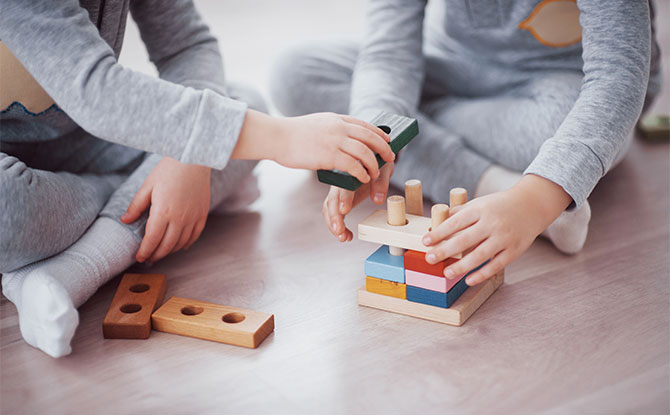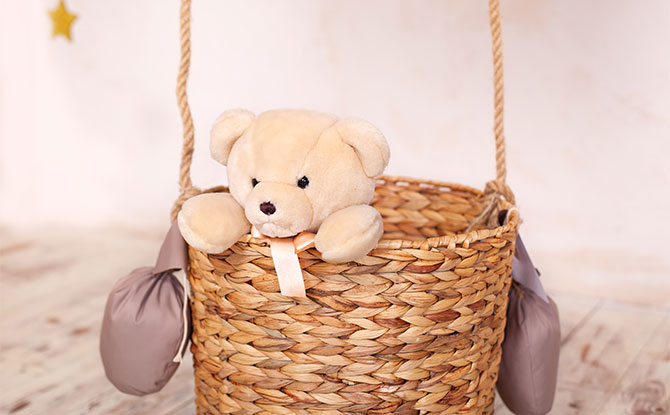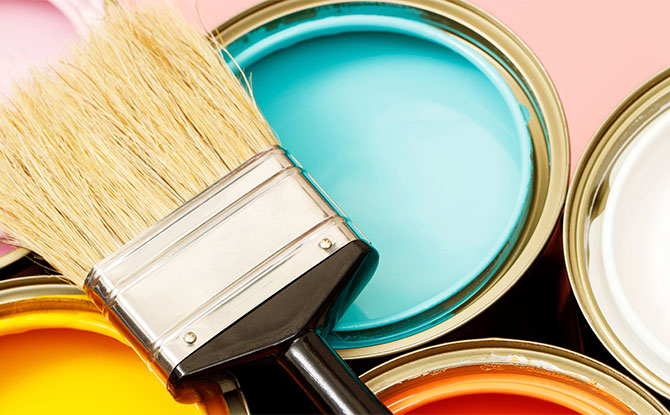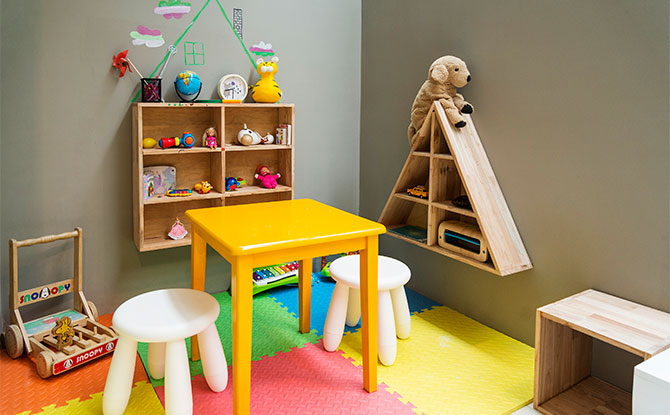Creating an eco-friendly, zero waste playroom for kids is not only beneficial for the environment but also a great way to teach them about sustainability. By incorporating sustainable practices and materials, you can create a waste-free play space that promotes a love for the planet.
Zero Waste Playroom for Kids: Setting the Stage for a Sustainable Future from Young
Here are some ideas to help you design an eco-friendly play area that your children will love:
1. Choose sustainable toys: Opt for toys made from eco-friendly materials such as wood or recycled plastic. Look for Forest Stewardship Council (FSC) certification for wooden toys to ensure they come from responsibly managed forests.
2. Use sustainable storage: Instead of plastic bins, consider using natural material baskets or those made from recycled materials. Woven baskets add a touch of natural beauty to the playroom while reducing plastic waste.
3. Opt for non-toxic art supplies: Choose art supplies made from non-toxic materials that are free from harmful chemicals. This ensures a safe and healthy creative environment for your little ones.
4. Decorate with sustainable furniture: Look for furniture made from sustainable materials such as medium-density fiberboard (MDF) or those certified by the Forest Stewardship Council (FSC). These materials are not only eco-friendly but also durable and stylish.
5. Paint the walls with VOC-free paint: Use paints that emit minimal or no harmful volatile organic compounds (VOCs). This creates a healthier playroom environment while minimizing air pollution.
6. Invest in washable slipcovers: Protect your furniture from stains and spills by using washable slipcovers. This extends their lifespan and reduces the need for replacement, contributing to a more sustainable playroom.
By implementing these ideas, you can create an eco-friendly, zero waste playroom for your kids that promotes sustainability, encourages creativity, and reduces waste. Let’s create a better future for our children together!
Choosing Sustainable Toys for the Playroom

When creating a zero waste playroom, one of the key aspects to consider is choosing sustainable toys that are made from eco-friendly materials. Not only do these toys help reduce waste, but they also teach children about the importance of caring for the environment. By opting for sustainable toys, you can create a playroom that promotes sustainability and provides a safe and healthy environment for your kids.
Wooden toys are an excellent choice for a sustainable playroom. They are durable, natural, and often made from sustainably sourced wood. Look for toys that have Forest Stewardship Council (FSC) certification, which ensures that the wood used in the toys comes from responsibly managed forests.
In addition to wooden toys, you can also find toys made from recycled plastic. These toys not only help reduce plastic waste but also give a new life to materials that would have otherwise ended up in landfills. When choosing recycled plastic toys, make sure they are free from harmful chemicals like BPA and phthalates.
| Benefits of Choosing Sustainable Toys |
|---|
| Reduced waste and environmental impact |
| Promotion of sustainability and eco-consciousness |
| Durable and long-lasting |
| Safe and non-toxic for children |
By incorporating sustainable toys into your playroom, you are not only providing your children with a fun and engaging environment but also teaching them valuable lessons about the importance of taking care of the planet. Remember to choose toys made from eco-friendly materials like wood or recycled plastic, and look for FSC certification for wooden toys to ensure sustainable sourcing. Together, we can create a better future for our children, one toy at a time.
Sustainable Storage Solutions for the Playroom
Opting for sustainable storage solutions is a great way to reduce waste in the playroom and create an eco-friendly environment for your kids. By choosing natural or recycled material baskets instead of plastic bins, you can not only organize toys and other items effectively but also minimize your impact on the environment.
Woven baskets made from natural materials such as seagrass or bamboo are not only aesthetically pleasing but also sustainable. These baskets are biodegradable and renewable, making them an eco-friendly choice for storing toys. Additionally, they add a touch of warmth and natural beauty to the playroom’s decor.
| Natural Material Baskets | Recycled Material Baskets |
|---|---|
| Seagrass | Recycled Plastic |
| Bamboo | Recycled Cardboard |
| Jute | Recycled Fabric |
If you prefer a more eco-conscious option, consider using baskets made from recycled materials. These can be crafted from recycled plastic, cardboard, or fabric, reducing waste and giving a new life to materials that would otherwise end up in landfills. Not only are you promoting sustainability, but you’re also teaching your children the importance of reuse and recycling.
Benefits of Sustainable Storage Solutions:
- Reduces waste and promotes sustainability
- Adds natural beauty and warmth to the playroom
- Teaches children about the importance of eco-friendly choices
- Uses renewable and biodegradable materials
- Helps minimize the impact on the environment
By incorporating sustainable storage solutions into your playroom, you can create an inviting space for your kids while also making a positive impact on the planet. Choose natural or recycled material baskets that align with your eco-conscious values, and enjoy a clutter-free play area that promotes sustainability and reduces waste.
Building an Eco-Friendly Toy Storage System

An eco-friendly playroom requires an effective and well-organized toy storage system that minimizes waste and encourages sustainable practices. By incorporating the following ideas, you can create a waste-free toy storage solution for your kids’ playroom:
- Utilize multi-functional furniture: Choose storage furniture that serves multiple purposes, such as ottomans or benches with built-in compartments. These pieces not only provide seating but also offer convenient storage for toys and other items.
- Create designated storage zones: Divide the playroom into different zones for different types of toys. This not only helps with organization but also makes it easier for kids to find and put away their toys. Use shelves, bins, or cubbies to create specific areas for building blocks, dolls, puzzles, and more.
- Implement a toy rotation system: Reduce clutter and give toys a longer lifespan by implementing a toy rotation system. Store some toys out of sight and periodically swap them with the ones currently in use. This not only keeps the playroom fresh and exciting but also helps kids appreciate and engage more with their toys.
- Label storage containers: Ensure that each storage container is labeled appropriately with pictures or words. This makes it easier for kids to identify where each toy belongs, promoting independent clean-up and ensuring toys are returned to their designated places.
Remember, an eco-friendly toy storage system should prioritize reusability and waste reduction. Consider using repurposed containers, such as old shoe boxes or jars, as storage solutions. Get creative and involve your kids in the process, making it a fun and educational activity. By implementing these sustainable playroom organization techniques, you can create a waste-free toy storage system that fosters an eco-friendly mindset in your children and contributes to a greener future.
| Benefits of an Eco-Friendly Toy Storage System | Actions |
|---|---|
| Minimizes waste | Prioritize reusable storage solutions |
| Promotes organization | Create designated storage zones and label containers |
| Encourages independent clean-up | Involve kids in the process and make it fun |
| Extends lifespan of toys | Implement a toy rotation system |
Non-Toxic Art Supplies for Creative Play
When it comes to fostering creativity in the playroom, it’s essential to provide your children with non-toxic art supplies that are free from harmful chemicals. By choosing art materials that prioritize safety, you can ensure that your child’s artistic endeavors are not compromised by potentially hazardous substances.
One key aspect to consider when selecting non-toxic art supplies is the absence of harmful chemicals. Look for products that are labeled as “non-toxic” or “harmful chemical-free,” as these are specifically designed to be safe for children to use. By avoiding art supplies that contain substances like lead, phthalates, and volatile organic compounds (VOCs), you can protect your child from potential health risks.
Some common non-toxic art supplies to consider include water-based paints, colored pencils made from natural materials, and clay that is free from harmful additives. You can also choose markers and crayons that are specifically formulated to be non-toxic, ensuring a safe and enjoyable artistic experience for your child.
Benefits of Non-Toxic Art Supplies
| Benefit | Description |
|---|---|
| Health and Safety | Non-toxic art supplies eliminate the risk of exposure to hazardous chemicals, protecting your child’s health. |
| Creativity and Imagination | By providing your child with safe art materials, you encourage their creative expression and allow their imagination to flourish. |
| Eco-Friendly | Many non-toxic art supplies are made from sustainable and eco-friendly materials, reducing their environmental impact. |
| Peace of Mind | With non-toxic art supplies, you can have peace of mind knowing that your child is engaging in artistic activities without being exposed to harmful substances. |
By prioritizing non-toxic art supplies, you not only provide your child with a safe creative environment but also promote their overall well-being. With these materials, your child can explore their artistic abilities while you can have peace of mind, knowing that they are using art supplies that are free from harmful chemicals.
Sustainable Furniture Choices for the Playroom
Investing in sustainable furniture options is an important step towards creating an eco-friendly playroom that promotes sustainability and reduces waste. By selecting furniture made from sustainable materials like medium-density fiberboard (MDF) or FSC-certified wood, you can ensure that your playroom is both environmentally conscious and aesthetically pleasing.
Medium-density fiberboard (MDF) is an excellent choice for playroom furniture as it is made from recycled wood fibers and resin, creating a durable and eco-friendly material. It is also more affordable than solid wood furniture, making it a practical choice for families.
For those who prefer the look and feel of solid wood, furniture made from FSC-certified wood is a great option. The Forest Stewardship Council (FSC) certification ensures that the wood used in the furniture comes from responsibly managed forests, promoting sustainable practices.
When choosing sustainable furniture for the playroom, consider pieces that are versatile and can adapt as your child grows. Look for furniture with adjustable features or modular designs that can be easily rearranged or repurposed in the future. This not only reduces waste but also allows the furniture to grow with your child’s changing needs.
Incorporating sustainable furniture into your playroom not only benefits the environment but also creates a healthier and safer space for your children. By making conscious choices, you can inspire them to be more mindful of their surroundings and instill values of sustainability from an early age.
| Sustainable Furniture Choices for the Playroom | Benefits |
|---|---|
| Medium-density fiberboard (MDF) | – Made from recycled wood fibers and resin – Durable and affordable – Eco-friendly material |
| FSC-certified wood | – Wood sourced from responsibly managed forests – Promotes sustainable practices |
| Versatile and adaptable designs | – Furniture can be easily rearranged or repurposed – Reduces waste – Adapts to your child’s changing needs |
Using VOC-Free Paint for a Healthier Playroom Environment

When it comes to painting the playroom, selecting VOC-free or low-VOC paint is crucial for creating a healthier and more environmentally-friendly space.
VOCs, or volatile organic compounds, are chemicals that can be released into the air during and after painting. These chemicals can have detrimental effects on indoor air quality and contribute to various health issues, especially in children.
By choosing VOC-free or low-VOC paint, you can minimize exposure to harmful emissions and create a safer play environment for your kids. VOC-free paints are formulated without any volatile organic compounds, while low-VOC paints contain significantly lower levels of VOCs compared to traditional paints. These eco-friendly paint options offer numerous benefits, such as reducing indoor air pollution, minimizing odors, and promoting better respiratory health.
When shopping for paint, look for products that are labeled as VOC-free or low-VOC and read the product descriptions carefully. Additionally, consider using natural pigments and plant-based dyes for a more sustainable playroom design. By making conscious choices in paint selection, you can contribute to a healthier and eco-friendly play space for your children.
The Benefits of VOC-Free Paint
| Benefits | Description |
|---|---|
| Improved Indoor Air Quality | Reducing or eliminating VOCs can help improve the air quality inside your home, creating a healthier environment for your kids to play in. |
| Reduced Health Risks | VOCs have been associated with various health issues such as respiratory problems, allergies, and even long-term health effects. Choosing VOC-free paint helps minimize these risks. |
| Environmentally-Friendly | Opting for VOC-free paint contributes to reducing environmental pollution and supports sustainable practices. |
| Odorless or Low Odor | VOC-free paints have little to no odor, making it more comfortable for your kids to spend time in the playroom immediately after painting. |
Your kids deserve a playroom that not only sparks their imagination but also prioritizes their health and well-being. By choosing VOC-free or low-VOC paint, you can create a safer and more eco-friendly play environment for your little ones. Consider making the switch to VOC-free paint and witness the positive impact it has on your playroom and your children’s overall health.
Extend the Lifespan of Playroom Furniture with Washable Slipcovers
To ensure the longevity of your playroom furniture while minimizing waste, consider using washable slipcovers that provide both protection and the ability to clean. Playrooms can be a hub of activity, and it’s not uncommon for furniture to experience spills, stains, and wear-and-tear. By investing in washable slipcovers, you can easily protect your furniture from stains and spills, while also extending their lifespan.
Washable slipcovers are designed to be easily removed and cleaned, making it simple to tackle any messes that occur during playtime. With the ability to machine wash or spot clean slipcovers, you can quickly restore your furniture to its original condition. This not only keeps your playroom looking clean and fresh but also helps to preserve the quality and appearance of your furniture.
Additionally, washable slipcovers offer a practical solution for homes with kids. They provide a barrier against everyday messes, such as food or drink spills, arts and crafts mishaps, or pet accidents. With slipcovers in place, you can have peace of mind knowing that your furniture is protected, allowing your children to freely enjoy their playtime without worrying about potential damage.
| Benefits of Washable Slipcovers: |
|---|
| 1. Protection against stains and spills |
| 2. Easy to clean and maintain |
| 3. Extends the lifespan of your furniture |
| 4. Preserves the quality and appearance of your furniture |
With washable slipcovers, you can strike a balance between keeping your playroom furniture in pristine condition and embracing a zero waste lifestyle. By reducing the likelihood of furniture damage and stains, you can minimize the need for replacements and ultimately contribute to a more sustainable playroom environment.
Incorporating Sustainable Decor in the Playroom
Creating an eco-friendly playroom involves carefully selecting sustainable decor that not only adds beauty but also aligns with the principles of zero waste. By choosing environmentally conscious decorations, you can create a space that promotes sustainability and reduces waste. Here are some ideas to incorporate sustainable decor in your playroom:
- Opt for natural and organic materials: Choose decorations made from natural and organic materials such as bamboo, cork, or jute. These materials are renewable and biodegradable, making them excellent choices for sustainable decor.
- Repurpose and upcycle: Give new life to old items by repurposing or upcycling them as decorations in your playroom. For example, you can transform mason jars into colorful pencil holders or use old picture frames to create a gallery wall for your child’s artwork.
- Use eco-friendly wall decals: Instead of traditional wallpaper or vinyl wall stickers, consider using eco-friendly wall decals made from sustainable materials. These decals are non-toxic, PVC-free, and can be easily removed without damaging the wall.
Remember to prioritize quality over quantity when it comes to decor. Instead of filling the playroom with unnecessary items, choose a few key pieces that will make a statement and contribute to a sustainable environment. By being mindful of the materials and production methods used in your decor choices, you can create a beautiful and eco-friendly playroom for your children.
| Benefits of Sustainable Decor |
|---|
| Reduces waste and promotes recycling |
| Creates a healthier indoor environment |
| Teaches children about the importance of sustainability |
| Supports eco-friendly businesses and practices |
By incorporating sustainable decor in your playroom, you are not only creating a visually appealing space but also instilling eco-conscious values in your children. Remember, even small changes can make a big difference when it comes to creating an eco-friendly, waste-conscious playroom.
Conclusion
Embracing the concept of zero waste in your kids’ playroom is not only a step towards sustainability but also a way to foster an environmentally conscious mindset from an early age. By creating an eco-friendly, zero waste playroom, you can teach your children the importance of caring for the environment and encourage them to make sustainable choices in their daily lives.
Here are some ideas to help you achieve a sustainable and waste-free playroom. Start by choosing toys made from sustainable materials such as wood or recycled plastic. Look for Forest Stewardship Council (FSC) certification for wooden toys, ensuring they are responsibly sourced.
When it comes to storage, opt for woven baskets made from natural or recycled materials instead of plastic bins. These sustainable storage solutions not only reduce waste but also add a touch of warmth and nature to the playroom decor.
Ensure the art supplies in the playroom are non-toxic and free from harmful chemicals. By choosing non-toxic art supplies, you create a safe environment for your children to express their creativity without compromising their health.
When selecting furniture for the playroom, prioritize sustainability. Look for pieces made from eco-friendly materials like medium-density fiberboard (MDF) or wood certified by the Forest Stewardship Council (FSC). Not only will this reduce the environmental impact, but it will also ensure the furniture lasts longer, saving you money in the long run.
Paint the walls with VOC-free paint to minimize harmful emissions. This not only creates a healthier playroom environment but also contributes to a cleaner atmosphere for all. Additionally, investing in washable slipcovers for furniture will not only protect them from stains but also extend their lifespan, reducing waste in the long term.
By implementing these ideas, you can create an eco-friendly, zero waste playroom for your kids that promotes sustainability and reduces waste. Embrace the concept of zero waste and inspire your children to become environmentally conscious individuals who actively contribute to a better future.

